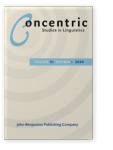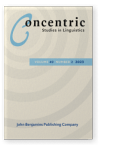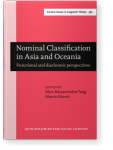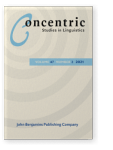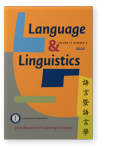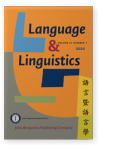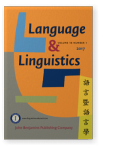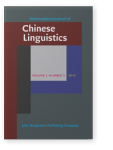One-Soon Her
List of John Benjamins publications for which One-Soon Her plays a role.
2024 On a dichotomy of question types: The case of Paiwan Concentric 50:1, pp. 20–56 | Article
This paper reexamines the conventional classification of questions in the Formosan language Paiwan: polar, disjunctive, and wh-questions and seeks to rectify some previous observations and offer a more insightful taxonomy. Specifically, we support the position in Egli (1990) and Huang et al.… read more
2023 Phylogenetic analyses for the origin of sortal classifiers in Mongolic, Tungusic, and Turkic languages Concentric 49:2, pp. 295–315 | Article
Numeral classifiers are one of the most common types of nominal classification systems. Their geographical distribution worldwide is concentrated in Asia, which infers a scheme of diffusion from a linguistic innovation. This study investigates the origin of classifier systems in the Mongolic,… read more
2023 Chapter 5. A single origin of numeral classifiers in Asia and the Pacific: A hypothesis Nominal Classification in Asia and Oceania: Functional and diachronic perspectives, Allassonnière-Tang, Marc and Marcin Kilarski (eds.), pp. 113–160 | Chapter
A world map of more than 700 numeral classifier languages shows a pattern of distribution due to diffusion, where the classifier feature radiates outward from a clear center of clustering in Southeast Asia and classifier languages gradually thin out and with less intensive use of classifiers… read more
2021 Taxonomy of questions in TaiwanSouthern Min Concentric 47:2, pp. 253–299 | Article
Contra the conventional four-way distinction of syntactically-formed questions in Taiwan Southern Min (TSM): (i) yes-no, (ii) A-not-A, (iii) disjunctive, and (iv) wh-questions (e.g., Lau 2010a), we justify a more revealing dichotomy of confirmation-seeking (CS) polar questions and… read more
2020 Numeral base, numeral classifier, and noun: Word order harmonization Language and Linguistics 21:4, pp. 513–558 | Article
Greenberg (1990a: 292) suggests that classifiers (clf) and numeral bases tend to harmonize in word order, i.e. a numeral (Num) with a base-final [n base] order appears in a clf-final [Num clf] order, e.g. in Mandarin Chinese, san1-bai3 (three hundred) ‘300’ and san1 zhi1 gou3 (three clf animal… read more
2020 台灣閩南語分類詞之檢驗 [Distinguishing classifiers in Taiwanese Southern Min] Language and Linguistics 21:3, pp. 375–407 | Article
近年來台灣閩南語(以下簡稱台語)的研究逐漸受到重視,量詞相關的研究不少,然而專門針對台語分類詞的研究相對稀少,主要的原因可能在於分類詞的定義不清,導致各家看法不一,甚或略而不談,連帶影響分類詞的教學。本文以Her & Hsieh (2010)和Her (2012)對於漢語分類詞與量詞所提出語意和語法測試作為基礎,界定台語分類詞範疇,並重新檢驗歷年文獻所提出的台語分類詞或量詞語料,建立83 個分類詞清單,其中65 個為分類詞,18 個為分類詞與量詞兼具,此清單可以與台灣華語的分類詞清單做比較(如:Her & Lai (2012)),作為台語分類詞研究與教學之參考。
read more2020 Left is right, right is not: On the constituency of the classifier phrase in Chinese Language and Linguistics 21:1, pp. 1–32 | Article
This paper argues for the left-branching constituency of the Chinese classifier phrase and demonstrates that the right-branching approach assumed by the majority of current syntactic works is not viable. The rejection of the right-branching approach entails the rejection of the “split” approach,… read more
2017 Structure of numerals and classifiers in Chinese: Historical and typological perspectives and cross-linguistic implications Language and Linguistics 18:1, pp. 26–71 | Article
It is controversial whether a classifier (C) or measure word (M) in Chinese forms a constituent first with Num (numeral) or N in a [Num C/M N] phrase. This paper reviews evidence for the [Num C/M] constituency from modern Chinese and then provides evidence from historical and typological… read more
2015 Justifying silent elements in syntax: The case of a silent numeral, a silent classifier, and two silent nouns in Mandarin Chinese International Journal of Chinese Linguistics 2:2, pp. 193–226 | Article
This paper demonstrates in the Mandarin construction with a numeral (Num), classifier (CL) or measure word (MW), and a noun (N), each can be a silent element (SE). A multiplicative function exists between Num and CL/MW. Num as a multiplier one is redundant and can be silent. CL, whose multiplicand… read more
